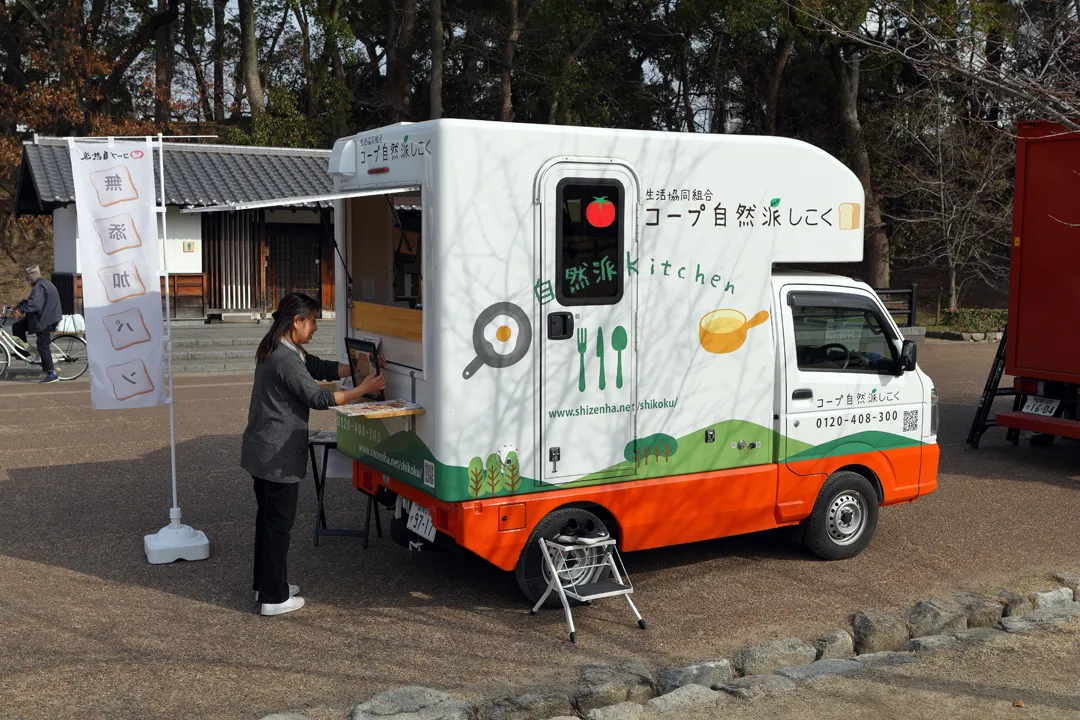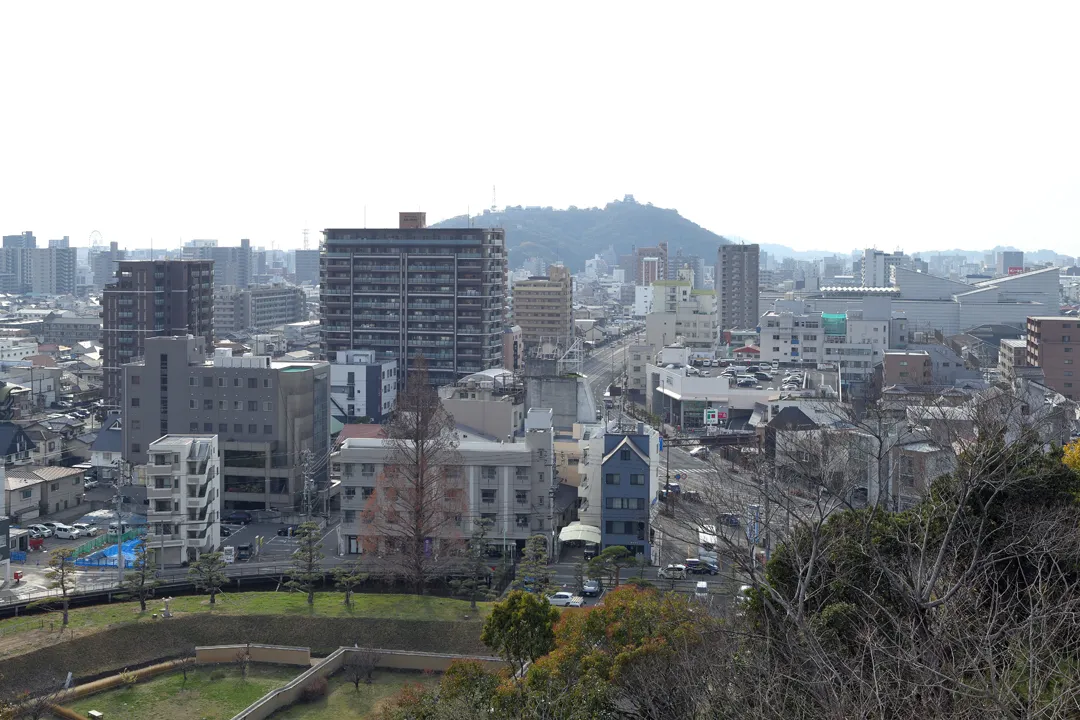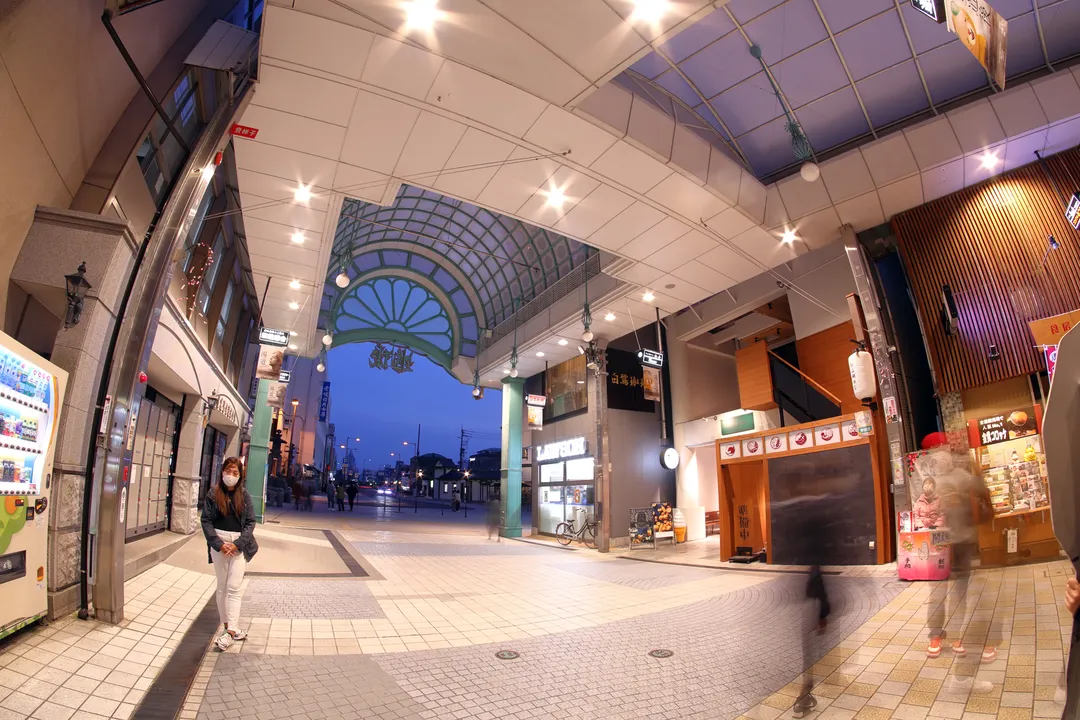It was well into the evening when we arrived in Matsuyama, the capital of Ehime Prefecture and the largest city in Shikoku. After having visited both Bitchū Matsuyama Castle and Marugame Castle in the same day, we were far too tired for any further sightseeing, so we headed directly to our hotel.

Although we generally prefer to stay at hotels near major train stations when in Japan, the JR Matsuyama Station is located west of the city center beyond walking distance from the best hotels, so we made an exception and chose a more centrally situated hotel, the ANA Crowne Plaza Matsuyama. To get there from the station, we had to ride a few stops on the Iyotetsu tram. Consisting of five lines, the tram system provides access to all of the city’s major attractions.

Upon checking in at the hotel, we were given a quarter-circle shaped room with an odd floor plan where the main space was subdivided by the bathroom walls into two smaller quarter-circle shaped areas, one for the bed and the other for the seating. The hotel’s website refers to this room type as “Annex Corner Double”. Despite its somewhat impractical layout, we found the room to be comfortable and quiet due to its location at the very back of the hotel.

We ate dinner around the corner from the hotel as we didn’t want to spend too much longer walking. I ordered Mitsuhama-yaki, a local variant of okonomiyaki which is folded over itself during cooking and thus is semicircular instead of round. However, it tasted more or less the same as a typical okonomiyaki containing noodles.

After a full night of sleep, we set out for Matsuyama Castle (also known as Iyo Matsuyama Castle to avoid confusion with Bitchū Matsuyama Castle) in mid-morning the following day. Uniquely among Japanese castles, there is a chair lift, opened in 1966, which carries visitors from street level to the entrance of the hilltop castle.

As Shikoku is a southern region, the weather there tends to be warmer than most other parts of Japan. Flowers around the castle grounds had already started to bloom and we were pleasantly surprised to see cherry blossoms.

The chair lift brought us nearly to the top of the hill, only a short distance away from the entrance. Unlike at some other castles where only the keep remains, many supporting buildings and structures around Matsuyama Castle have been preserved, so the entire complex has an impressive scale.

Unfortunately, there were also more tourists here than at any of the other castles that we visited and it was difficult to take photos without people in the background. Nonetheless, it was not even half as crowded as the average tourist attraction in Tokyo, so it was still fairly relaxing to go around.

Constructed in 1854, the main keep is the newest among the twelve original castles in Japan. To put this in perspective, Matsue Castle was built more than 240 years earlier. Consequently, in addition to its grander overall scale, Matsuyama Castle also shows numerous refinements in architecture and construction techniques.

Since the castle is located atop the most prominent hill in the city center, the view from the top floor is unparalleled in all directions. The city and its suburbs extend all the way to the mountains in the distance, but even the tallest of the modern buildings here reach only a fraction of the height of this vantage point.

We admired the view for a while longer and then climbed back down. Although it was still winter, we couldn’t resist trying the orange ice cream sold at the gift shop, oranges being the representative agricultural product of Ehime Prefecture. It had a memorable taste — the slightly bitter orange jam topping provided an effective contrast to the sweetness of the ice cream.

Instead of riding the chair lift again, we descended the hill on foot in a different direction so we could visit the Ninomaru (二の丸, or second ring of defenses) Garden, a modern garden built over a ruined lower part of the castle while incorporating the layout of the former structures in its design. The flower beds there were already in bloom but most of the flowering trees were still dormant.


After leaving the castle park, we rode a tram to Dōgo Onsen, at the westernmost end of the system. The tram station building there was built in 1895 using a Western-inspired architectural style, which was popular in Japan at the time.

First, we checked out the Dōgo Park in front of the entrance to the main shopping area. This park was formerly the site of another castle, though all of the structures are long gone and only the moat remains. We climbed to the top of the hill where the main keep once stood in the 16th century, but where today, there is only a metal viewing platform. From atop there, we could see Matsuyama Castle as the defining feature of the city’s skyline.


The west side of the park consists of a large open area and a playground. Because of its proximity to residential areas, a lot of families with children were there, which made it more lively than the park around Matsuyama Castle. There were also some cherry trees in the early stages of blossoming.

Next, we went through the shopping street to the main building of Dōgo Onsen, but it was under renovation and mostly blocked from view. In any case, we weren’t prepared to soak in the hot spring. We only used the foot bath on the small hill across from the main building.

After enjoying the hot water, we walked back through the shopping street and looked for restaurants, but we couldn’t agree on what to eat, so finally we decided to return to our hotel and eat somewhere around there.


We ended up at a restaurant that offered grilled seafood, which actually turned out to be served raw for us to grill ourselves. Even though we didn’t fully understand the written instructions that were only in Japanese, it was an interesting new experience to end our day with.


